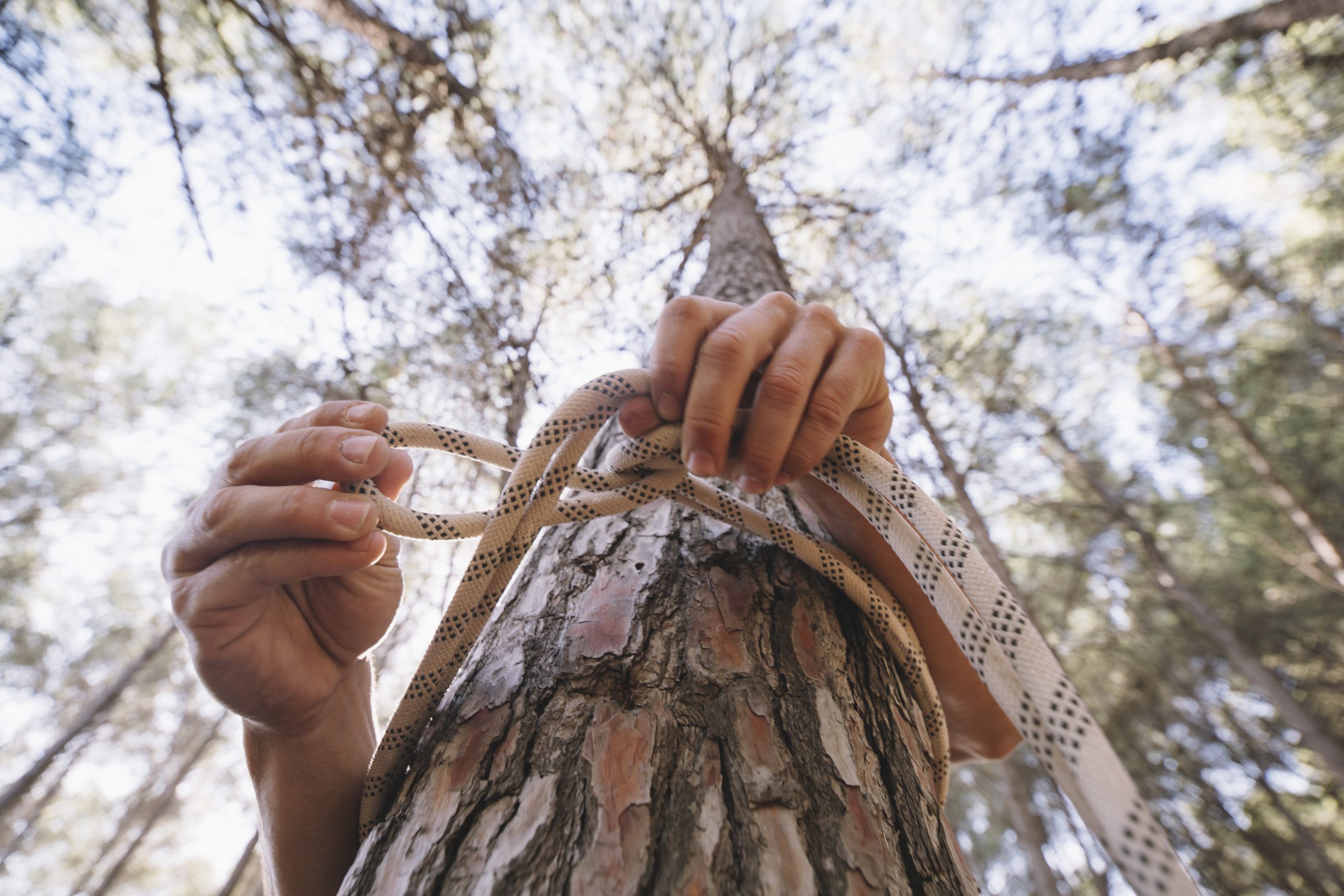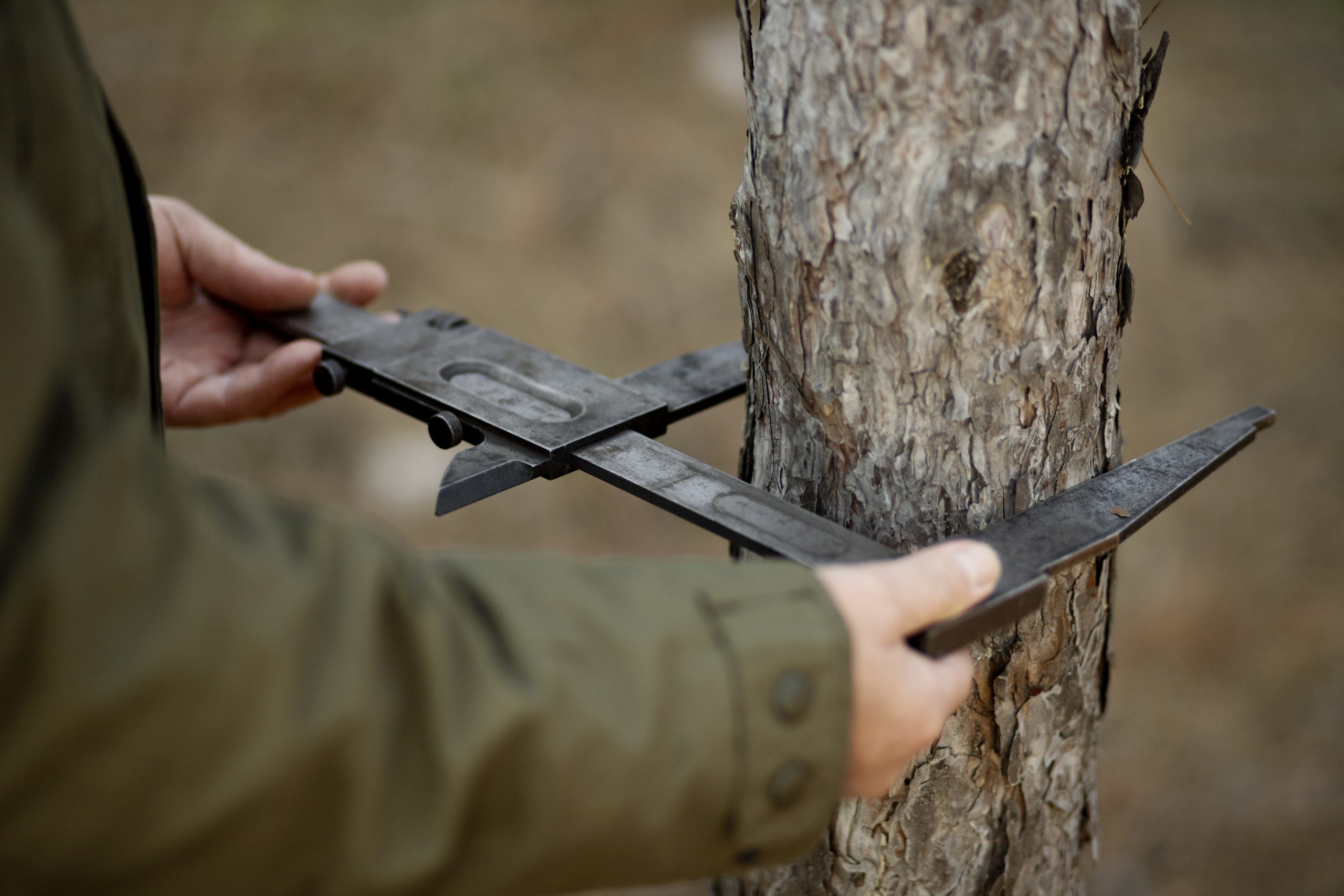UNDERSTANDING THE DIFFERENT TYPES OF TREE BRACING AND CABLING SYSTEMS
Tree bracing and cabling systems are arboricultural techniques and structural support systems designed to provide supplemental support and stability to trees, particularly those that are structurally compromised or at risk of failure. These systems involve the use of various materials such as steel cables, rods, and braces to reinforce a tree’s structure, reduce the risk of branch or trunk failure, and extend the tree’s lifespan. Tree bracing and cabling systems are typically employed to improve tree safety, preserve valuable trees in urban and landscape settings, and mitigate the potential risks associated with large, mature trees. These systems are implemented following a thorough assessment of the tree’s health and structural integrity and are designed to minimize the chances of failure while allowing the tree to continue growing and thriving.

Purpose of tree bracing and cabling systems
The primary purpose of tree bracing and cabling systems is to enhance the structural stability and safety of trees, particularly those that exhibit structural weaknesses or pose a risk of failure. These systems serve several important purposes:
- Risk Reduction: Tree bracing and cabling systems help mitigate the risk of branch or trunk failure, which can lead to property damage, injury, or even death. By providing additional support, these systems reduce the likelihood of tree parts falling and causing harm.
- Preservation: They enable the preservation of mature and valuable trees that might otherwise need to be removed due to structural issues. This is especially important in urban and landscaped environments where trees provide aesthetic and ecological benefits.
- Safety: Enhancing the safety of trees in public spaces, such as parks, streets, and residential areas, ensures that they remain safe for pedestrians, motorists, and nearby structures.
- Longevity: Tree bracing and cabling systems can extend the lifespan of trees by reducing the stress on weakened or compromised branches and trunks. This allows the tree to continue to thrive and provide environmental benefits.
- Aesthetic Value: They maintain the aesthetic value of trees by preventing the removal of large limbs or entire trees. Maintaining mature trees in urban landscapes can contribute to the beauty and character of the area.
- Economic Benefits: Protecting mature trees with these systems can yield economic benefits by avoiding the costs associated with tree removal, property damage repair, and potential legal liabilities.
- Environmental Benefits: Mature trees play a crucial role in urban ecosystems by providing shade, improving air quality, and supporting wildlife. Preserving them through structural support systems contributes to environmental sustainability.
- Heritage Trees: In some cases, trees with cultural or historical significance can be preserved for future generations through the use of these systems.
- Tree Health: By reducing the risk of structural failure, tree bracing and cabling systems can also promote overall tree health. They allow the tree to allocate resources to growth and vitality instead of expending energy on wound closure or repair.
- Community Well-being: Healthy and safe trees contribute to the well-being of communities by offering shade, recreational spaces, and improved mental and physical health for residents.
Overall, the purpose of tree bracing and cabling systems is to strike a balance between tree preservation and safety, ensuring that trees continue to thrive and provide their numerous benefits while minimizing the risks associated with structural weaknesses or hazards. These systems are implemented following careful assessment by certified arborists to determine the most appropriate and effective solution for each individual tree.
Types for Tree Health and Safety
Tree health and safety are critical considerations in arboriculture and forestry. Ensuring the well-being of trees not only helps preserve valuable assets in urban and natural environments but also reduces the risk of accidents and damage. Different types of practices and techniques are employed to address tree health and safety. Here are several key types:

- Tree Pruning:
- Crown Cleaning: Removal of dead, dying, or diseased branches to prevent their fall and reduce the risk of disease spread.
- Crown Thinning: Selective removal of branches to reduce wind resistance and improve light penetration.
- Crown Raising: Elevating the lower branches to provide clearance for pedestrians, vehicles, and structures.
- Crown Reduction: Reducing the size of a tree’s canopy to lower weight and wind resistance.
- Tree Inspection and Assessment:
- Regular visual inspections by certified arborists to identify signs of disease, decay, structural weaknesses, or insect infestations.
- Use of specialized equipment such as resistograph and sonic tomography to assess internal wood conditions.
- Disease and Pest Management:
- Monitoring for common tree diseases (e.g., Dutch elm disease, oak wilt) and pests (e.g., emerald ash borer, gypsy moth).
- Implementing appropriate treatments such as insecticides, fungicides, or biological controls.
- Tree Support Systems:
- Tree Bracing and Cabling: Installing steel cables, rods, or braces to support weak or structurally compromised limbs or trunks.
- Guying: Using guy wires to stabilize a tree or its branches.
- Dynamic Systems: Employing flexible materials to allow for movement and reduce the risk of failure.
- Soil Management:
- Improving soil quality through practices like aeration, mulching, and proper watering to promote root health.
- Addressing soil compaction and nutrient deficiencies.
- Root Zone Protection:
- Installing barriers or using techniques like air spading to protect tree roots from construction damage or soil compaction.
- Establishing root protection zones around trees during construction projects.
- Emergency Response:
- Developing plans and protocols for emergency tree removal and hazard mitigation in case of storms, disease outbreaks, or other crises.
- Prompt response to mitigate immediate safety hazards.
- Tree Removal and Replacement:
- Safe removal of trees that pose an imminent danger or are severely compromised.
- Planting replacement trees to maintain ecosystem services and aesthetics.
- Education and Outreach:
- Educating the public, property owners, and communities about proper tree care and the benefits of healthy trees.
- Promoting responsible tree planting, maintenance, and conservation.
- Legal and Regulatory Compliance:
- Ensuring that tree care practices comply with local regulations, codes, and ordinances related to tree health and safety.
- Tree Preservation Plans:
- Developing comprehensive plans for managing and preserving trees in urban and development projects, including construction protection measures.
- Research and Innovation:
- Advancing tree care practices through ongoing research and the adoption of new technologies and techniques.
Tree health and safety are essential components of responsible tree care and environmental stewardship. Properly maintained and managed trees contribute to the well-being of communities and the sustainability of natural ecosystems while minimizing the risks associated with tree-related accidents and damage.
Types of Tree Bracing and Cabling Systems
Tree bracing and cabling systems come in various types, each designed to address specific tree structural issues and safety concerns. The choice of system depends on factors such as the tree’s condition, size, species, and location. Here are some common types of tree bracing and cabling systems:
- Static Cabling Systems:
- Traditional Static Cable: This system uses steel cables to support weak or heavy limbs by connecting them to stronger, more stable branches or the tree trunk. It provides stability by limiting movement.
- Rod Systems: Instead of cables, rods or braces are installed to support split or weakened branches or trunks. These systems are often used when a tree’s natural structure can be retained with stabilization.
- Through-Rod Systems: A threaded rod is installed through the trunk or branch, securing it in place with nuts and washers on both sides. This helps close the wound and strengthen the affected area.
- Dynamic Cabling Systems:
- Flexible Steel Cables: Unlike static systems, flexible steel cables are designed to allow some tree movement. They are used to reduce the risk of failure during storms while permitting a degree of tree swaying, which can help strengthen the tree.
- Shock Absorbing Systems: These systems include shock-absorbing devices that allow for dynamic movement while absorbing and dissipating forces during windy conditions. They minimize the risk of cable or branch breakage.
- Composite Materials:
- Fiber Straps: High-strength synthetic fiber straps are used to support limbs or trunks. They are lightweight and flexible while providing strong support. Fiber straps are often used for young or slender trees.
- Composite Rods: Made from composite materials, these rods are used as alternatives to traditional steel rods. They are lightweight, corrosion-resistant, and can be more aesthetically pleasing.
- Hybrid Systems:
- Combination of Static and Dynamic Components: Some systems combine elements of both static and dynamic systems to provide stability while allowing for some tree movement. These systems can be customized to meet specific tree needs.
- Tree Spur Systems:
- Tree spur systems involve the installation of metal spurs that provide support to branches by attaching them to the trunk. These systems are used for structural reinforcement and are particularly helpful for multi-trunk trees.
- Tree Guying Systems:
- Guying systems involve the use of steel cables or anchors to stabilize the entire tree or specific branches. Guy wires are anchored to the ground to prevent tree movement during storms.
- Root Crown Excavation Systems:
- In some cases, root crown excavation involves digging around the base of the tree and installing a support structure, such as a concrete collar, to prevent root compression and improve stability.
- Artificial Limbs and Prosthesis:
- In cases where branches or portions of the tree are damaged or removed due to disease or decay, artificial limbs or prosthesis can be installed to replace lost sections and maintain tree aesthetics.
The selection of the appropriate tree bracing and cabling system depends on the specific circumstances of the tree in question, as well as the advice of a certified arborist or tree care professional. Proper installation and regular inspection and maintenance are essential to ensure the effectiveness and safety of these systems.
Comments
Post a Comment